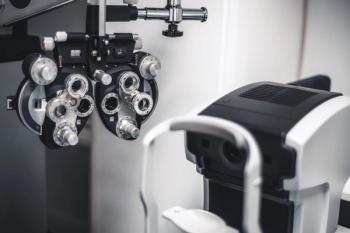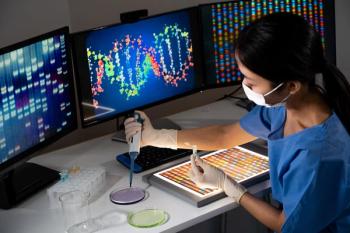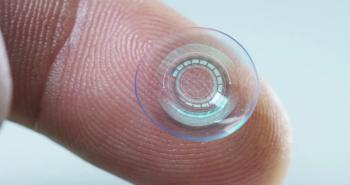
Why wait to recommend cataract surgery?
Years ago, I realized that a cataract is anomaly of the ocular system that should be eradicated at its earliest stages. Frankly, if you were in a relationship that was not going well and was destined to keep getting worse, would you stay?
I was asked to stop at the grocery store on my way home from the office to pick up some vegetables for a salad. Now my first thought was, “How many calories do I have left on MyFitnessPal that I need to eat a salad?” And the second thought was, “How do I know what vegetables are ripe?” This is a big decision, choosing veggies that are not ready to be eaten can have a disastrous effect on the palate, which is already stretched from, well, eating vegetables.
As I perused Mother Nature’s version of edible delicacies, I realized that I just don’t know how to determine what specific vegetable is ripe. Is it hard? Soft? Yellow? Frankly, as an optometrist, I should know matters of the optics, el ojo, the visual system-not ripeness. Yet, how many of you still claim you do what is ripe?
Why wait?
Years ago, I realized that a cataract is anomaly of the ocular system that should be eradicated at its earliest stages. Frankly, if you were in a relationship that was not going well and was destined to keep getting worse, would you stay? If you ate something that started to taste bad, and every nibble proceeded to get worse, would you just keep eating? Of course you wouldn’t.
Yet, we, as ODs, look at this formerly transparent tissue-which induces a refractor error, commonly creates glare, halos, and overall degraded vision-as something that needs to simmer, like a molé. A friend of mine developed a cataract during her pregnancy.
She went to a colleague who told her that because she was considering getting pregnant again, it would not really be a good idea to remove the cataract-the 20/400 cataract that was making her nauseous. I am still flummoxed as to why that doctor would suggest waiting until after another pregnancy. In fact, I don’t know why we would ever wait to remove a cataract.
Don’t get me wrong, I get the notion that our forefathers were foreshadowing the potential disastrous effects of
However, I was not alive when our great-grandparents went to the barber to have a tooth pulled or had blood leeching when they had a disease. Can I get a hand up of any OD who would tell a patient with a toothache to wait until it is so unbearable that you should have it removed? I didn’t think so. What is ripe?
This is 2015, doctors, and the technological advancements that have elevated cataract surgery to one of the safest and efficacious surgeries of the eye. This publication provides you with up-to-date FDA approvals and new procedures that make removal of the lens safer than even, well, the last time I said how safe it is to perform.
The femtosecond revolution that started with
Measuring wavefront aberration and astigmatism in vivo and deciding what lens to use at the surgical table enhances an already enchanted process. The natural crystalline lens is not a kind tissue; it induces aberrations and forces us to be reliant on cheaters for close vision-nobody looks good in cheaters, sorry, just not sexy.
However, your patients do not have to be burdened with glasses after cataract surgery, or at least not as much of the time. The biometric analysis and the lens options create seamless opportunities for the lenticuarly impaired. The presbyopic- and toric-correcting lenses really work. And you know what? The lenses don’t have to be ripe.
Creating a differential diagnosis
When you sit down with a patient who has noticed any change in his vision, you should instantly start creating a differential diagnosis. The road map to the refractive error of your patient starts with the case history.
Asking pointed question like, “Did the change occur rapidly, or has this been a gradual effect? Is your vision worse in distance or near? Does one eye seem worse than the other? Do you notice any glare or halos at night?” This query will help point you toward the correct route. If this patient is close to 50 years old, then cataracts have to be on the map.
The ocular surface is the first stop on your trip before you start assessing the lens and posterior pole. It is important at this time to remember that a clinically significant change from cataracts does not always manifest in the Snellan acuity chart. Debilitating glare, worse than 20/40, can also be a good reason to remove the lens.
During this venture, if you find that you do not have an adequate way to measure the glare, pick up your binocular indirect ophthalmoscope and use that with the best-corrected visual acuity to assess the glare. The goal is to help guide the patient to long-lasting, sustainable, good vision.
Taking a more active role in the diagnosis and treatment recommendation for cataract surgery can be a little daunting.
Patients often may be surprised to hear that at a young age they have the start of these opacities. However, the sooner you start alerting them to the advantages of lens removal, the more they will anticipate the final product. Remember a lens is not a horrible thing to waste-after a certain time it is a horrible thing to keep.
Newsletter
Want more insights like this? Subscribe to Optometry Times and get clinical pearls and practice tips delivered straight to your inbox.















































